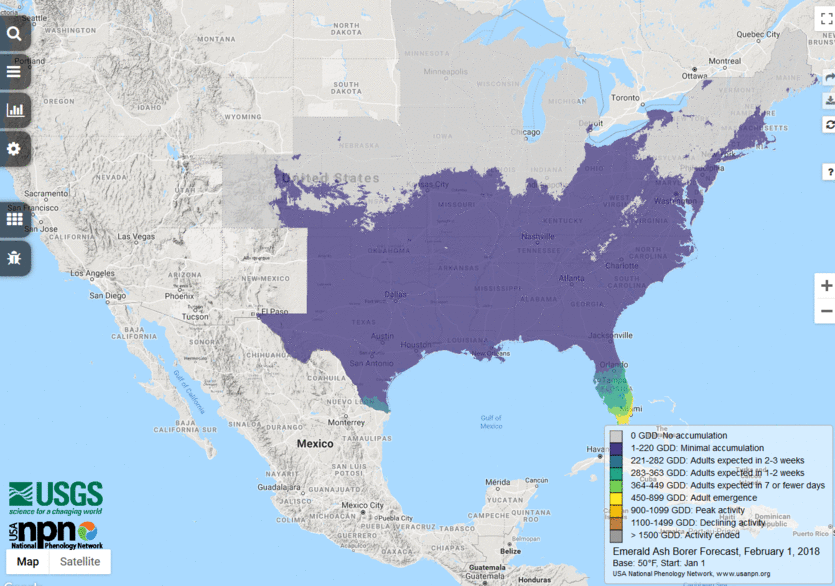Date: July 14, 2021
Post by: Güray Hatipoğlu1, 2Kira Sullivan-Wiley, 3Jaime Ashander
1Middle East Technical University, Earth System Science, Ph.D. Candidate, 2University of Notre Dame, Biological Sciences, Postdoctoral Associate, 3Resources for the Future; SESYNC Affiliate Scholar in Socio-Environmental Systems Modeling
In this series, we are asking: How might ideas from the social sciences improve ecological forecasting? What new opportunities and questions does the emerging interdisciplinary field of ecological forecasting raise for the social sciences? Using social science to understand how and when ecological forecasts are included in environmental policy can improve the ways in which ecological forecasters frame, communicate, and adapt their work.
This installment engages with the relationship between ecological forecasts and environmental policy. The central aim of environmental regulations is to maintain critical services for local populations, including clean air, clean water, and biodiversity. The central aim of ecological forecasting is to predict future conditions under a particular set of circumstances, including policy and regulatory scenarios.
Because environmental regulation and ecological forecasting are both concerned with future environmental conditions, one might expect to find ecological forecasts included and/or integrated into environmental regulations. In this piece we ask, is this the case?

We identified several operational forecasts that are either currently used or mandated for future use by national or international regulations and treaties. These include a decision support system in the Baltic Sea, a harmful algal bloom monitoring system in the Republic of Korea, and a system for pest forecasting in Latvia. In this blog post, we trace each system from inception to operation to give insight into how ecological forecasts can be integrated into legislation and action.
An increasing problem in the Baltic Sea is widespread eutrophication. This issue, and the associated reduced fish stocks resulted in the creation of HELCOM, the Helsinki Commission, a multilateral decision making body for all states having a coast on the Baltic Sea. At first, HELCOM relied on close monitoring and measurements taken by individual states to address eutrophication. Over time, policies and binding rules were developed by HELCOM, but with incomplete scientific understanding of the complicated ecosystem dynamics of the Baltic Sea. Ultimately, HELCOM realized the utility and significance of an international independent scientific organization, to maintain a database where each state would report its pollutant loads and other relevant information. Moreover, HELCOM instituted a requirement of modeling ecosystem dynamics to generate both environmentally sound and economically feasible plans. In 1999, it initiated MARE (Marine Research on Eutrophication) to construct a user-friendly decision support system, NEST, for the Baltic Sea that is based on, inter alia, ecological models. NEST’s outputs were considered to be the “best available scientific information” in the 2007 HELCOM Baltic Sea Action Plan. The Plan explicitly incorporates NEST outputs into decisions made to control eutrophication. The NEST is still operational and can be used by anyone freely (scroll to the bottom of this webpage to find details about the different versions of NEST and how to download the tool).
In addition to the direct use of forecasts by government decision makers, there are also instances of the government supporting ecological forecasts intended for the public, akin to daily weather forecasts. The National Institute of Fisheries Science of the Ministry of Oceans and Fisheries of the Republic of Korea actively monitors harmful algal blooms in its country’s coastal areas and issues forecast alarms regarding its spread. This system, Red Tide Control Room, developed after dramatic fish losses owing to the harmful algal blooms, with their forecasts widely broadcasted to everyone that might be affected.
Another example is Latvia’s Plant Protection Center’s (PPC) and its use of RIMPro forecasts to aid in responsible use of pesticides. RIMPro is a forecasting tool initially developed to forecast apple pests (though it has diversified since) and is intended to inform growers’ decisions on the use of pesticides on apple trees. This particular product was chosen by PPC after substantial research, a growing body of knowledge including from the local people, and comparisons with several other available forecasting tools. The Plant Protection Center has been working for more than a hundred years and has historically collaborated directly with governmental bodies on preparing legislation. The institute’s recently separated research arm (Agrihorst) conducts state-sanctioned monitoring and research on pest management and broadcasts RIMPro forecasts, normally a commercial product, on their websites freely for regions of Latvia.
In these examples, ecological forecasts of complicated ecological phenomena — MARE NEST for eutrophication in the Baltic Sea, the Republic of Korea’s Red Tide Control Room for harmful algal blooms, RIMPro for pests in Latvia — are incorporated directly and formally into environmental decisions. These examples indicate that the widespread use of ecological forecasts may depend not only on their predictive power but also on how they are integrated and recognized in formal decision processes. Experience and social science research suggest alignment of stakeholder goals and co-production with stakeholders are two necessary components to achieve this tight integration. Use of this and other knowledge from decision sciences or organizational sciences can help to develop forecasts that are fit for purpose.








